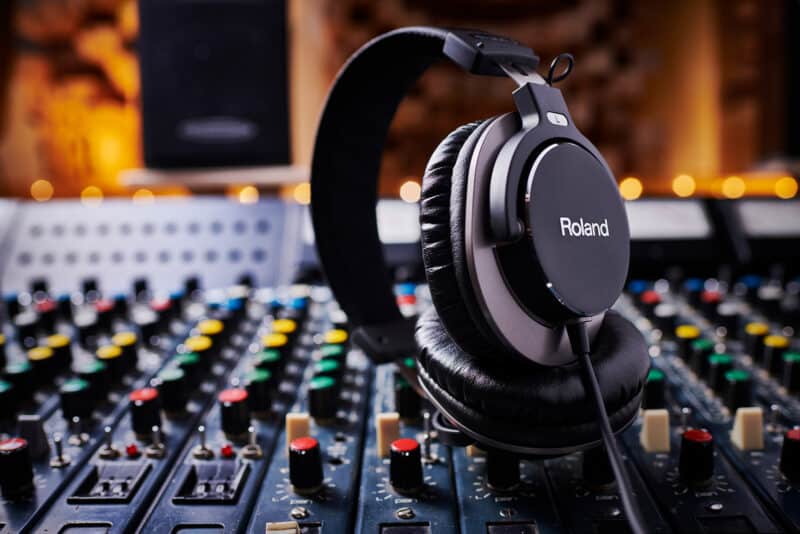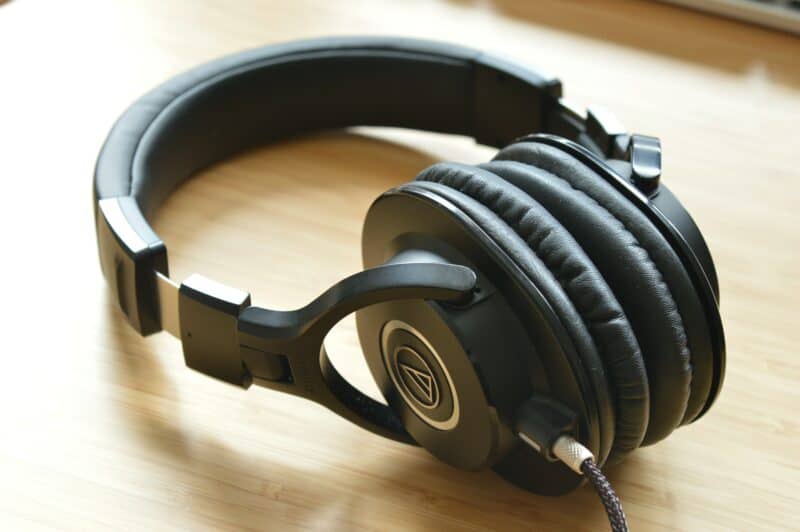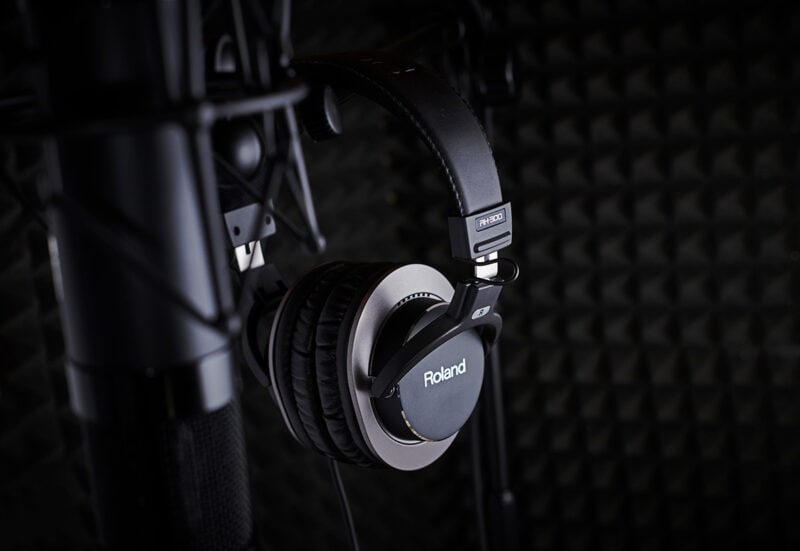With digital pianos being more popular than ever, marketing literature in recent years has really focused on the increased flexibility being able to plug a set of headphones into your piano provides. Many folks purchasing a digital piano for the first time are also buying a set of headphones if they don’t already have one, generally speaking.
For people who don’t already have a set of headphones when purchasing a digital piano, the question that often comes up is whether or not it’s worth it to invest more money into a better set of headphones with good build quality. “Will a cheap set of headphones cut it?” And if not, “how much do I have to spend to get great sound?”
In today’s article and video, we’ll be addressing this question by play testing some of the headphones models at different price points frequently paired with digital pianos to see exactly what you get for your money, hopefully proving clarity to anyone looking to answer this question.
Whether you’re a long-time subscriber or new to our blog and YouTube channel, welcome!
Best Headphones For Digital Pianos – Background

To answer the question right off the hop as to whether it makes sense to invest in a good set of headphones to go along with your digital piano, several years ago the answer would have been a definitive no. The reason for this is that the fidelity of the headphone output was incapable of rendering a better experience regardless of headphone quality.
In the past, the headphone experience was really an afterthought by digital piano manufacturers. But in the last few years, however, this has really changed and digital piano companies are now investing substantially in R&D with the intention of improving the headphone output.
On most high-end digital pianos and even some mid-range digital pianos starting around $2,000, there is now technology specifically geared towards boosting the headphone experience.
Now, as the consumer, do you follow suit and actually invest in a set of studio headphones? Does it make enough of a difference to justify the extra investment? Let’s take a look at exactly what digital pianos can now do to improve the experience.
Types of Technology
The main companies like Roland, Kawai and Yamaha are essentially providing the user with a measure of customization to the headphone experience as a whole. For example, some digital pianos allow you to select settings based on the headphone type that you’re using, i.e. open vs closed-back headphones, in-ear vs over-ear, ear cups vs ear pads etc.
And even the fidelity itself due to a focus on the headphone amplifier has increased substantially in recent years to the point that digital piano manufacturers are simply assuming users will be spending a lot of time playing with headphones.
More recently, manufacturers have been dedicated to producing a very cool 3D effect the player experiences with a set of headphones plugged in.
Even on entry-level digital pianos, the sonic experience of playing with headphones allows for a much more critical listening experience due to obviously superior sound quality over the onboard speakers.
How Have Customers Responded?
In our own observations of digital piano buying behavior, most customers are still treating the headphone purchase as an afterthought. The pervasive opinion among piano buyers is that it doesn’t really matter which headphones you wear since they all perform the same fundamental function.
But this isn’t necessarily the right way for everyone to go about things, since for some folks, having an awesome headphone experience will be a driving force in exerting maximum enjoyment out of their digital piano, and can even inspire them to practice more consistently.
And if you’ve already gone ahead and invested in a digital piano, spending a little bit more on a decent set of headphones to leverage a different level of enjoyment out of the instrument seems like a no-brainer for some people if they can truly discern the difference.
Headphone Testing
We’re going to go ahead and discuss a couple of different headphone models here ranging from the $130 mark to the $300 mark to see, as we go up in price, whether we actually do hear a difference in detail, quality, and overall enjoyment. All of these headphones include a 1/4” stereo adapter in the box and have conventional headphone specs regarding things like impedance and neodymium drivers.
We’re only looking at 4 brands here, so unfortunately we won’t be covering some other great headphone brands like Audio-Technica, Sennheiser HD and Sony.
The piano Stu tested the various headphones on is his own Kawai NOVUS 5 – an instrument indicative of the vanguard of digital piano sound technology, however, the same technology can be found in their CA series at a much lower cost.
Yamaha has a similar level of tone technology at approximately the same price points, as Roland, so you don’t have to spend $10,000 or more on a digital piano to get the kind of technology that can really leverage a great headphone sound.
In fact, as we said above, even entry-level models are capable of a pretty satisfying headphone experience these days.
What are we Listening For?

We’re going to be paying attention to several different things with each pair of headphones. For one, do the headphones distort when playing thicker chords in the lower mid-range?
With a lower-quality headphone, a sort of broken-up rumble becomes audible as soon as you play any chords consisting of about 5 notes or more below middle C. This instantly breaks the illusion that you could be in front of a real piano as soon as the headphones do this.
Another thing we’ll be listening to is what happens the instant that the sound activates; is the sound gentle or piercing? Does this change throughout the range of the piano?
Are the headphones able to convey complexity in the treble range? And finally, when you know an instrument’s been recorded well in a real space with real microphones, are you getting the 3D soundstage effect that the manufacturers are trying to generate?
Shure SRH840 Professional Monitoring Headphones – $129 USD
The Shure SRH 840 (stands for Shure Reference Headphones) are a popular set of headphones known for their wide padded headband, good durability, and collapsible design for ease of portability. A carrying bag is included at no cost.
We’re certainly noticing some great detail with open chords in the middle of the keyboard, along with a very clear stereo image. Moving into that the potentially problematic lower range however and things start to get very muddy.
That said, the overall playing experience with these headphones is actually quite positive. There’s not any unwanted boominess in the bass register when playing single or double notes though the muddiness appears as soon as you start playing thicker chords. The top-end is clear without harshness, and just as enjoyable as the midrange.
A sense of air and space isn’t really coming through here, nor is the 3D soundstage effect we had mentioned earlier. Still, for $100, these headphones sound substantially better than a $20 throwaway, and the coiled cable is a great touch.
Roland RH300 – $189 USD

The RH300’s are a versatile set of headphones from Roland also commonly used for studio monitoring. While some of the marketing literature refers to these headphones as being audiophile quality, we certainly wouldn’t go quite that far. These ship with a carrying pouch.
Right away it’s apparent that there’s a lot more high-end detail coming through these and a much more pronounced mid-range as well. We’re starting to get a sense of space in the upper mid-range playing these headphones, which is probably the range that the majority of piano players will spend the most time in.
There’s a little bit less power at the top of the range, the bass is a little bit less warm and there’s still some distortion in the low end. So, we would say these are a step up over the SRH840As if you’re looking for a great mid-range. Roland also deserves mention for their excellent warranty coverage.
AKG K171 – $249 USD
The AKG K171 are a further step up in price, and these are known for their precisely tailored frequency response, and come with a gold plated adapter, detachable cable and carrying case.
The detail we were hearing in mid and upper range on the Roland’s are now present throughout the entire range of the instrument everything just feels tighter.
Some of the lower-range distortion we noted particularly on the Shure’s is totally diminished here, so these are definitely producing the best headphone experience thus far with the best frequency range.
Meze 99 Classics – $309 USD
Finally, we come to the Meze 99 Classics. These are a high-end set of headphones that also look absolutely killer, having won numerous awards for design. The ear cups use real walnut, so just keep in mind that replacement ear pads are quite expensive for these.
With these, we’re getting some really nice sheen, rather in the upper register, and an almost ethereal effect.
But the biggest difference with the Meze’s is that if you listen carefully enough when you’re playing a real piano, you actually have that same kind of shimmer happening in the mid-range and we’re hearing that here. It creates a sense of transparency to the point where it’s easy to think you’re playing with open-back headphones, even though the backs here are entirely closed.
There’s just a hint of a little bit of distortion happening on the lower end, but it’s the least out of the four pairs we tried.
Closing Thoughts
Here are some conclusions based on comparing these four sets of headphones; if you’ve got a digital piano that’s good enough to drive a good set of headphones, as you go up through these various price points, the experience very clearly improves as you move up.
With the top two sets, we were really getting a true sense of 3D space because they’re able to convey the detail that was captured in the original sample, transforming the playing experience.
If you’ve got the budget and you’ve purchased an instrument that has some audio fidelity specs built into it, particularly if it has a dedicated headphone amplifier, it’s definitely worth it to spend a couple hundred dollars on a good set of headphones assuming you’ll be using them fairly frequently.
The typical $40 or $50 Best Buy headphones are just instantly trumped by the headphones we heard today.
Some other models you may want to consider checking out are the Audio-Technica ATH-M70X’s, Beyerdynamic DT 770 Pro, as well as the Shure SRH440, SRH940 and SRH1540 sets.

